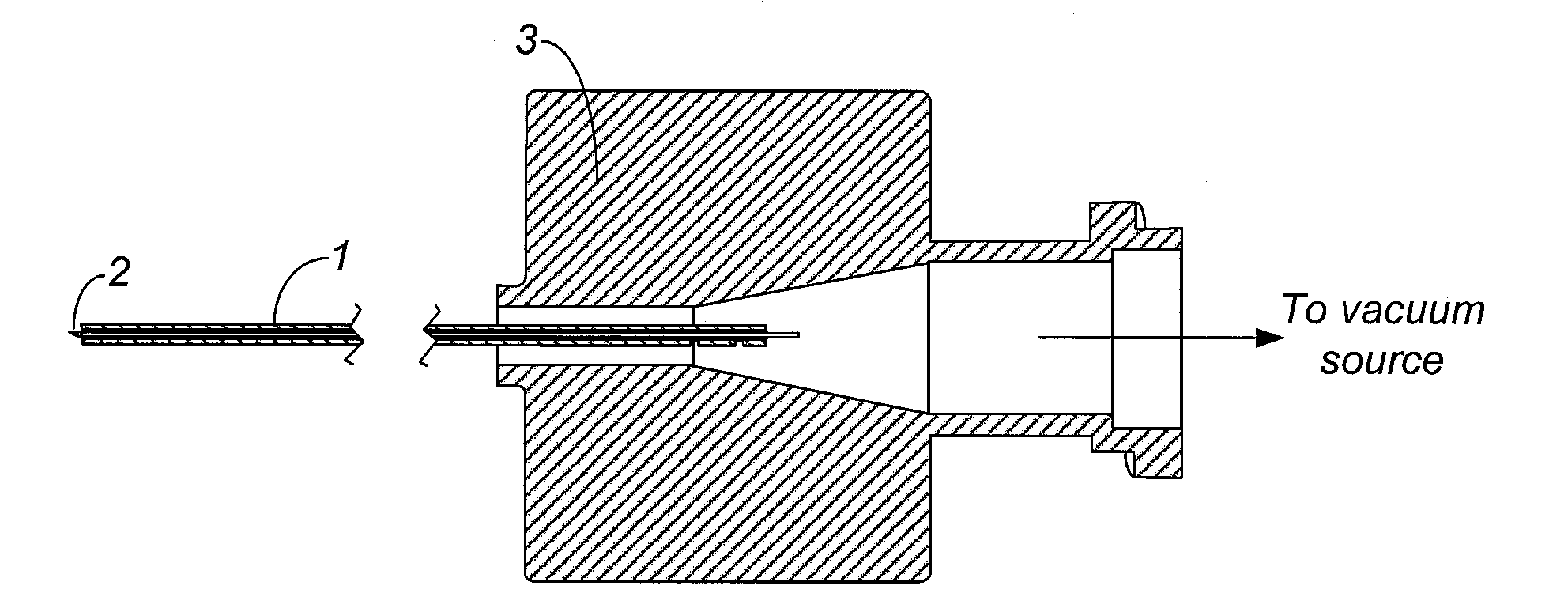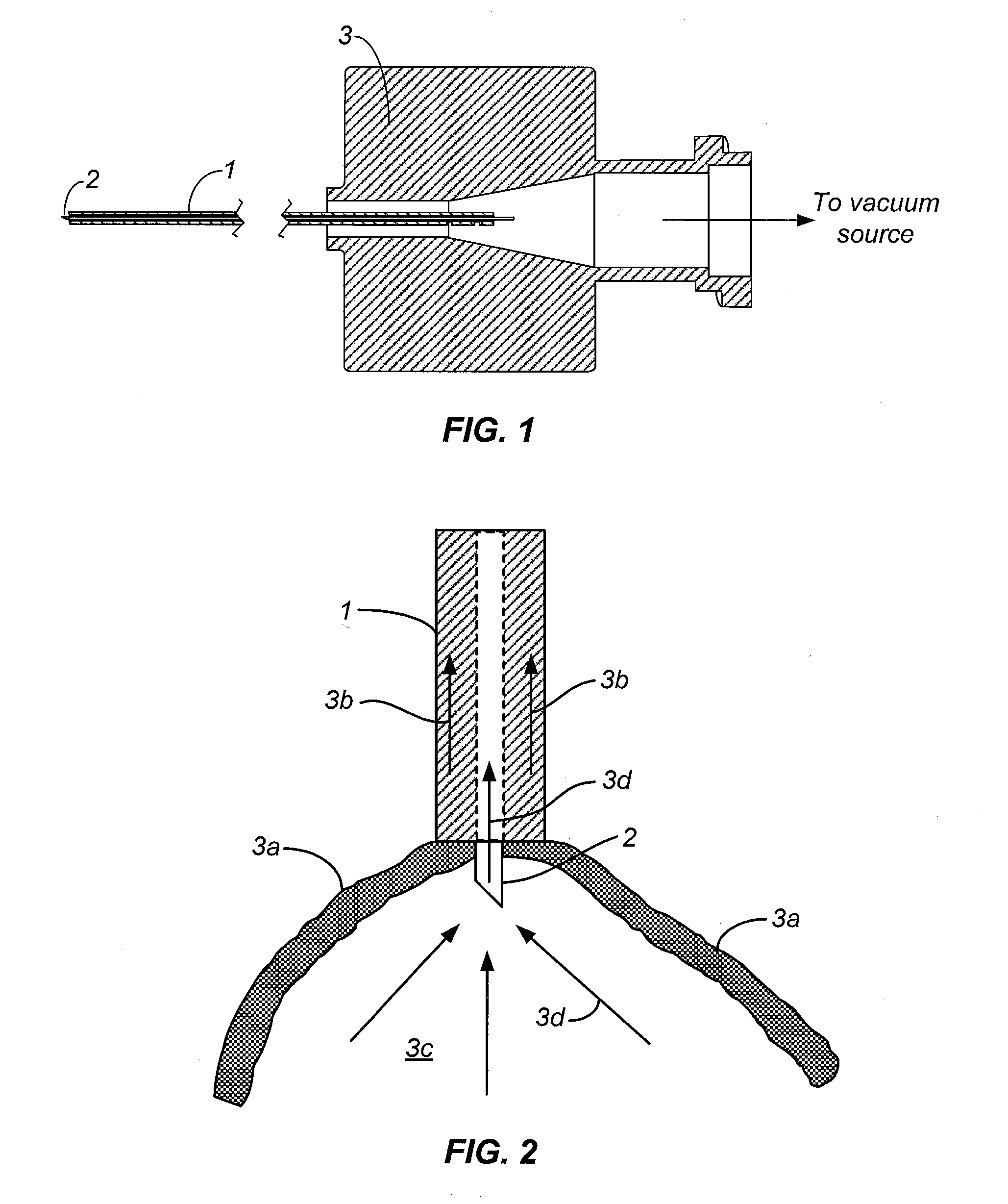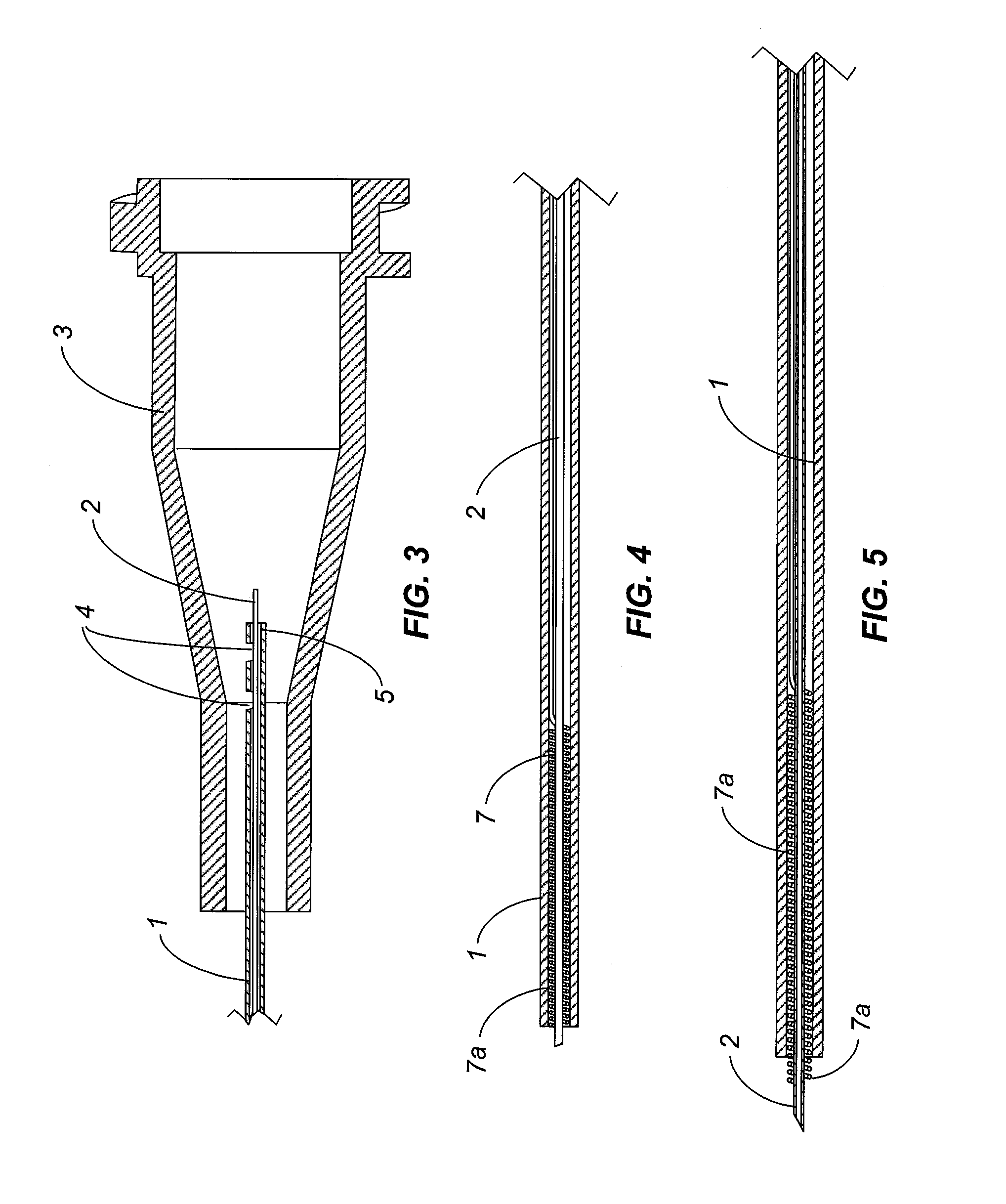Device for aspirating fluids
a technology of aspirating fluid and subretinal fluid, which is applied in the field of aspirating fluid devices, can solve the problems of atrophy of the sensory retina, vision loss, and each of the above procedures does not provide immediate repositioning of the detached retina to the underlying tissues
- Summary
- Abstract
- Description
- Claims
- Application Information
AI Technical Summary
Benefits of technology
Problems solved by technology
Method used
Image
Examples
example 1
Aspiration Device
[0068]A 25 gauge stainless steel hypotube (Small Parts, Inc) was used as the main shaft. Two holes were drilled at distances of 0.05″ and 0.12″ from the proximal edge of the hypotube. A third hole was drilled 1.15″ from the distal edge of the hypotube. A second 25 gauge stainless steel hypotube (Small Parts, Inc) was laser welded at an angle to provide a flow path to the third hole.
[0069]A polyimide tube with a lumen of 100 microns, an outer diameter of 125 microns, and a length of 0.25″ (Microlumen, Inc) was inserted for a distance of 0.05″ into another polyimide tube with a lumen of 165 microns, an outer diameter of 210 microns, and a length of 1.45″. Cyanoacrylate adhesive (Loctite 4011, Loctite, Inc) was applied to bond the two polyimide tubes together.
[0070]A nitinol coil with a length of 0.165″ and outer diameter of 250 microns was made on a coil winder using nitinol wire with a diameter of 0.0015″ (Fort Wayne Metals, Inc). The nitinol coil was placed over pol...
example 2
Laboratory Testing with the Aspiration Device
[0073]A human cadaver eye was obtained from an eye bank. The cornea, the iris, the lens, and the vitreous were removed, providing access to the retina from the interior of the globe without significantly damaging the retina tissue, while also allowing for the retina to retain its original physiological attachments. Using existing post-mortem retinal detachments or creating a retinal detachment using phosphate-buffered saline injected through a needle inserted through the exterior of the globe into the subretinal space, experiments were conducted using the prototype.
[0074]The aspiration device from Example 1 was inserted into the subretinal space and a vacuum level in the range of 300 mm Hg to 600 mm Hg was applied. The retinal tissue was visibly captured by the outer annular vacuum, while fluid and tissue debris visibly migrated towards the micro needle. The device was capable of aspirating SRF until the re-apposition of the sensory retin...
example 3
An Aspiration Device with External Tissue Guard
[0075]A 25 gauge stainless steel hypotube (Small Parts, Inc) was used as the main shaft and cut to a length of 1.25″. A 0.25″ length of polyimide tubing with an inner diameter of 0.0044″ and an outer diameter of 0.0056″ (Microlumen, Inc.) was used as the micro needle. Cyanoacrylate adhesive (Loctite 4011, Loctite, Inc.) was used to bond the micro needle within the main shaft, such that 0.20″ of the micro needle protruded from the main shaft. UV cure epoxy (Loctite 3341, Loctite, Inc.) was applied near the distal opening of the micro needle in the shape of a disc 360 degrees around the micro needle to act as a tissue guard. The disc had a diameter of 0.012″.
PUM
 Login to View More
Login to View More Abstract
Description
Claims
Application Information
 Login to View More
Login to View More - R&D
- Intellectual Property
- Life Sciences
- Materials
- Tech Scout
- Unparalleled Data Quality
- Higher Quality Content
- 60% Fewer Hallucinations
Browse by: Latest US Patents, China's latest patents, Technical Efficacy Thesaurus, Application Domain, Technology Topic, Popular Technical Reports.
© 2025 PatSnap. All rights reserved.Legal|Privacy policy|Modern Slavery Act Transparency Statement|Sitemap|About US| Contact US: help@patsnap.com



